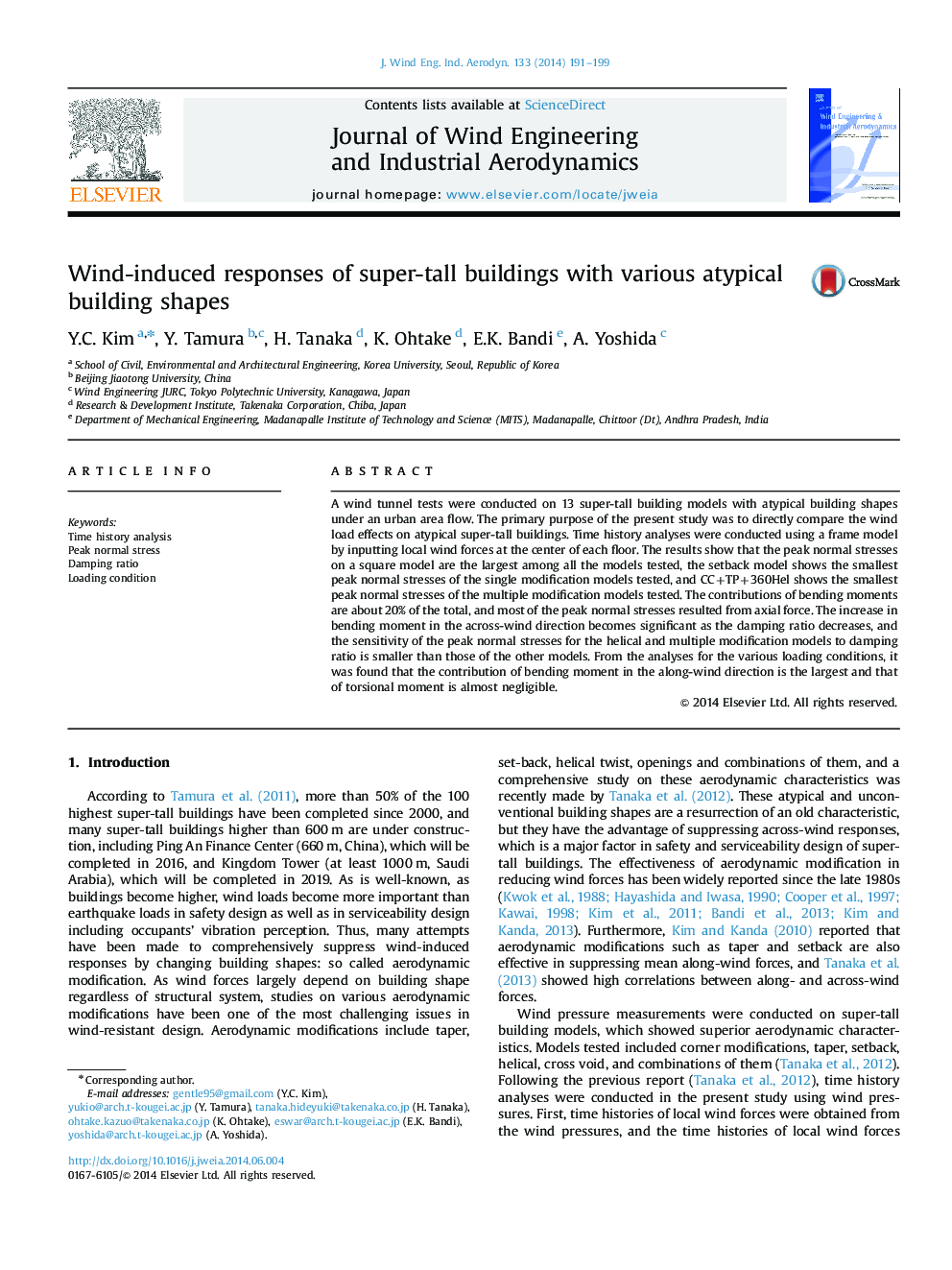| Article ID | Journal | Published Year | Pages | File Type |
|---|---|---|---|---|
| 293474 | Journal of Wind Engineering and Industrial Aerodynamics | 2014 | 9 Pages |
A wind tunnel tests were conducted on 13 super-tall building models with atypical building shapes under an urban area flow. The primary purpose of the present study was to directly compare the wind load effects on atypical super-tall buildings. Time history analyses were conducted using a frame model by inputting local wind forces at the center of each floor. The results show that the peak normal stresses on a square model are the largest among all the models tested, the setback model shows the smallest peak normal stresses of the single modification models tested, and CC+TP+360Hel shows the smallest peak normal stresses of the multiple modification models tested. The contributions of bending moments are about 20% of the total, and most of the peak normal stresses resulted from axial force. The increase in bending moment in the across-wind direction becomes significant as the damping ratio decreases, and the sensitivity of the peak normal stresses for the helical and multiple modification models to damping ratio is smaller than those of the other models. From the analyses for the various loading conditions, it was found that the contribution of bending moment in the along-wind direction is the largest and that of torsional moment is almost negligible.
